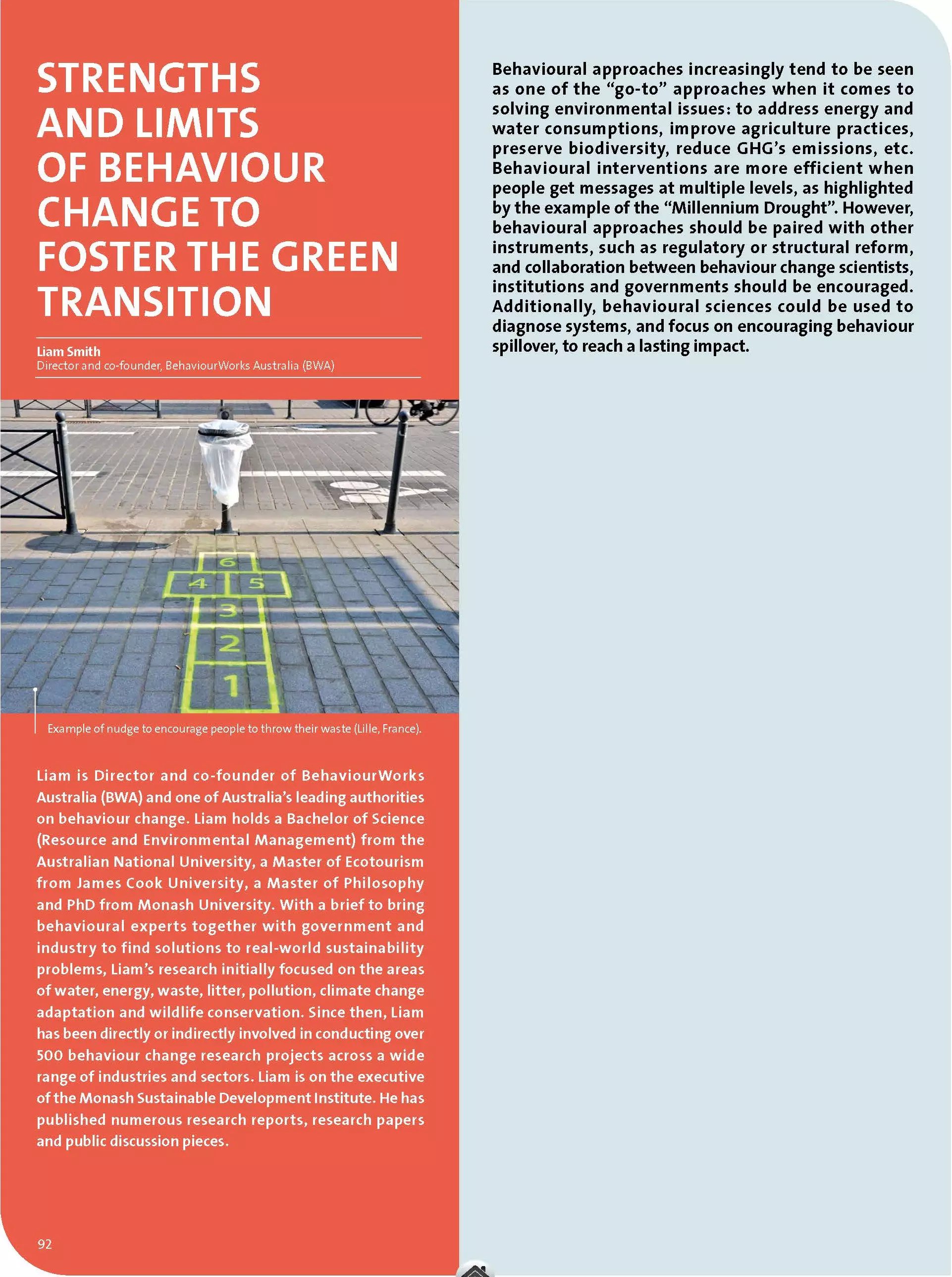Liam Smith
Director and co-founder, BehaviourWorks Australia (BWA)
Behavioural approaches increasingly tend to be seen as one of the “go-to” approaches when it comes to solving environmental issues: to address energy and water consumptions, improve agriculture practices, preserve biodiversity, reduce GHG’s emissions, etc. Behavioural interventions are more efficient when people get messages at multiple levels, as highlighted by the example of the “Millennium Drought”.
However, behavioural approaches should be paired with other instruments, such as regulatory or structural reform, and collaboration between behaviour change scientists, institutions and governments should be encouraged. Additionally, behavioural sciences could be used to diagnose systems, and focus on encouraging behaviour spillover, to reach a lasting impact.



